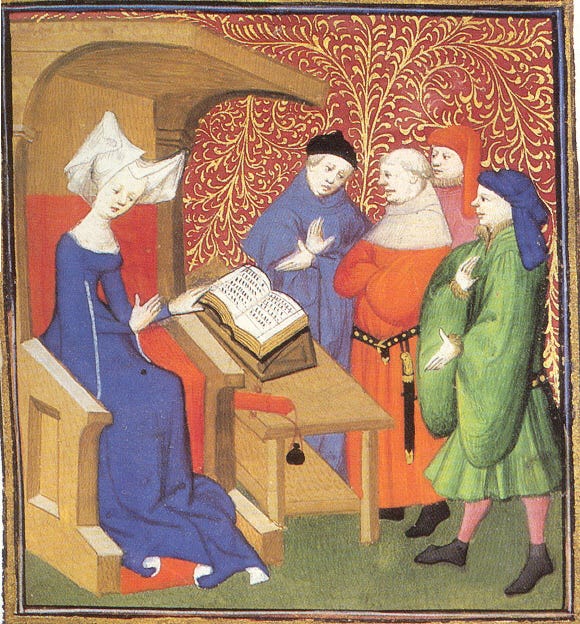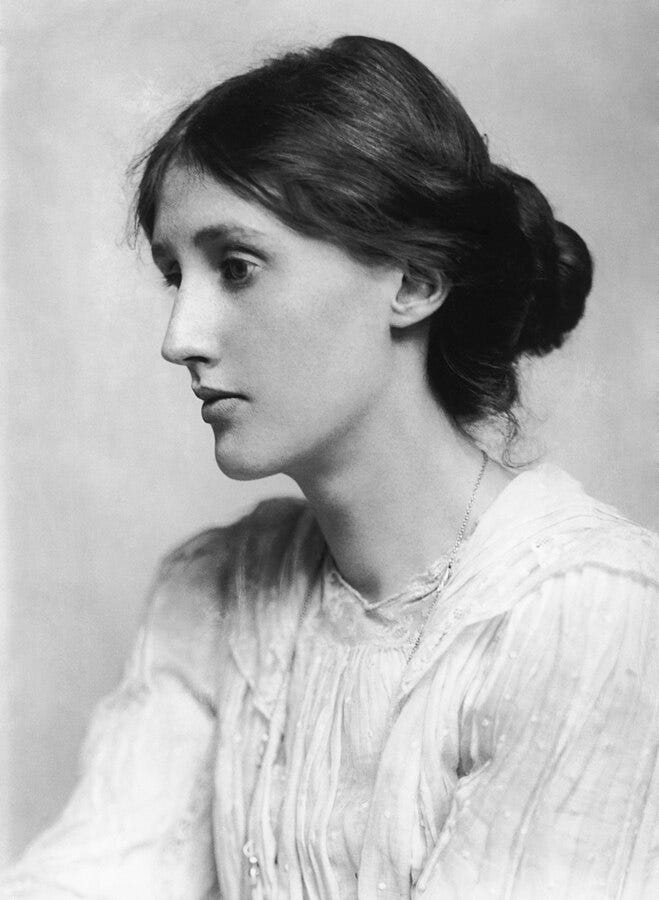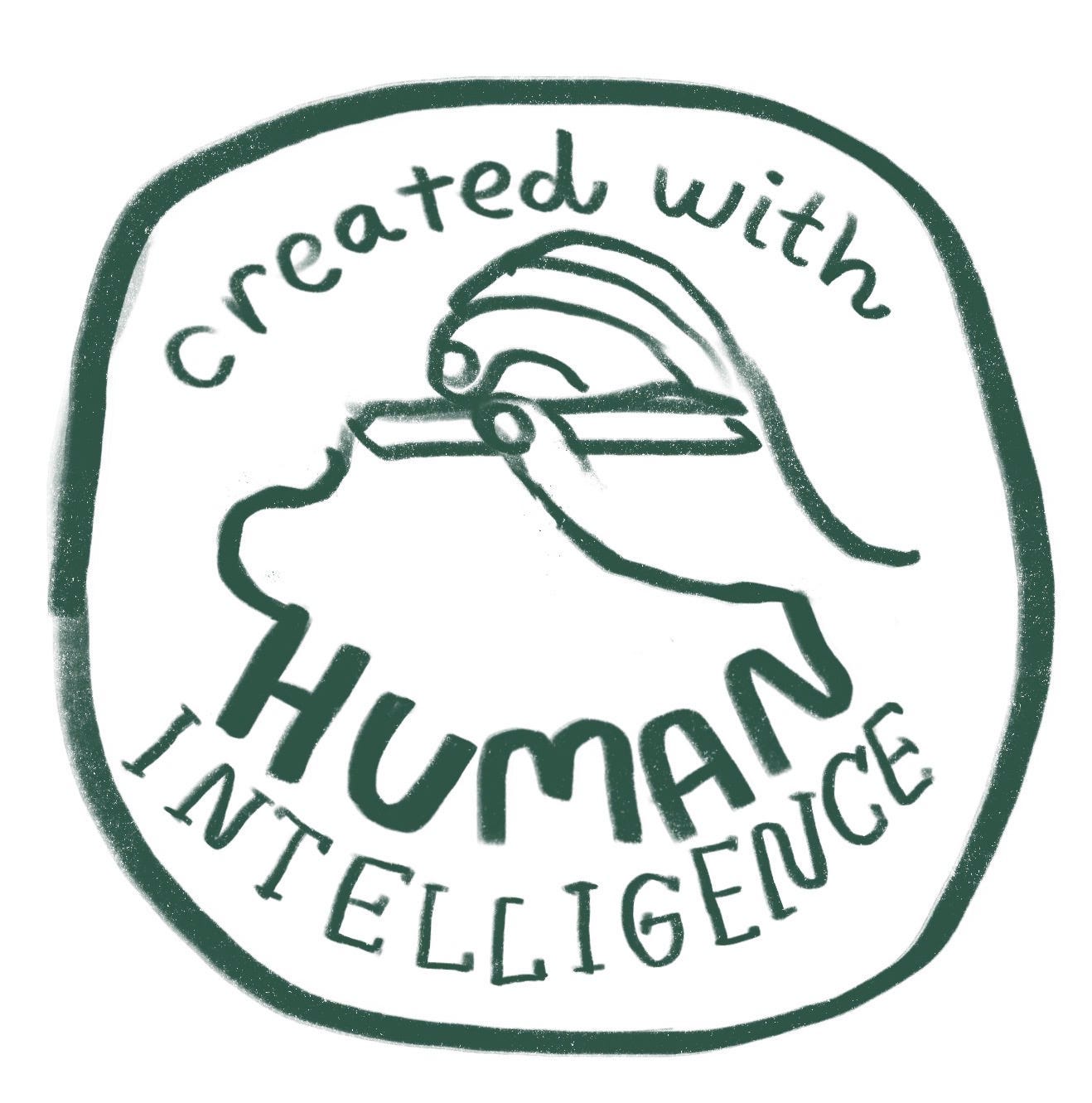Exploring Life and Literature
Dear friends,
From the earliest recorded words to the most celebrated novels of today, women have shaped the literary landscape, often against the constraints of their time. Their words have illuminated history, society, and the human condition, yet their contributions have not always been acknowledged. One of my earliest literary influences was my Grandmother, Juanita Yates, a journalist and author who inspired me to read and write. Today, we explore beyond the bookshelf on a journey through the ages, tracing the evolution of women’s voices in literature from antiquity to the modern era and exploring how they have influenced literature and transformed culture and society.
The origins of literature are intertwined with mythology, oral traditions, and early recorded texts. In these formative centuries, male authors dominated the literary canon, yet women’s voices emerged, often fragmented or overlooked. One of the earliest known female writers was Enheduanna, a Sumerian priestess and poet of the 23rd century BCE. Her hymns to the goddess Inanna blended religion with personal expression, offering one of the first recorded examples of self-authored literature.
Women’s literary presence was scarce in Ancient Greece and Rome but not absent. Sappho, the renowned Greek lyric poet of the 6th century BCE, was a revolutionary figure who crafted intensely personal and emotive poetry centered on love, desire, and the female experience. Her fragmented verses influenced later literary traditions despite centuries of suppression and censorship.
While women’s works in antiquity were often lost or ignored, their presence persisted in oral traditions, religious texts, and philosophical discussions. However, it would take centuries before women could claim an equal stake in the literary world.

During the medieval period, religious and social restrictions shaped most women’s literary contributions. Many female writers came from monastic backgrounds, using their religious affiliations to gain access to education and the written word. Hildegard of Bingen, a 12th-century German abbess, wrote theological texts, scientific treatises, and visionary works that blended spirituality with natural philosophy.
In the secular realm, Christine de Pizan, a 14th-century French writer, emerged as one of the first female authors to make a living from her work. Her seminal text, The Book of the City of Ladies (1405), directly challenged misogynistic narratives by constructing an allegorical city where women’s achievements were honored. Her work laid the foundation for proto-feminist literature, questioning societal norms and advocating for women's education. Though the medieval era imposed strict gender roles, these women carved out spaces where literature became a tool for intellectual and social discourse.
The Renaissance brought an explosion of literary creativity, yet women remained largely excluded from formal education and publishing. However, some defied convention. Mary Sidney Herbert, a noblewoman and poet, translated and wrote works that circulated in elite literary circles, demonstrating that women could master both classical learning and artistic expression.
The 17th and 18th centuries saw the rise of more female writers entering the literary world. Aphra Behn, one of the first English women to earn a living as a writer, challenged gendered assumptions with her plays, poetry, and prose, most notably Oroonoko (1688), which confronted race, colonialism, and power issues. In her A Vindication of the Rights of Woman (1792), Mary Wollstonecraft laid the intellectual groundwork for modern feminism, arguing for women’s education and autonomy.
These women and their contemporaries forced literature to grapple with new ideas about gender, morality, and intellectual equality, setting the stage for the rise of women novelists in the 19th century.

The 19th century was a transformative era for literature, particularly for women writers who defied societal constraints and asserted their voices in a male-dominated literary world. Women writers of this period revolutionized literature and played a significant role in shaping social consciousness, advocating for gender equality, and influencing cultural narratives. During the early 19th century, women faced significant challenges in pursuing literary careers. Society often dictated that a woman's role was confined to the domestic sphere, and those who ventured into writing risked social censure. Many women adopted male pseudonyms to navigate these barriers, as seen with Mary Ann Evans, who published as George Eliot, and the Brontë sisters, who initially wrote under the names Currer, Ellis, and Acton Bell. These strategic choices allowed them to gain a readership and be taken seriously in a literary landscape largely dominated by men.
Despite these obstacles, women writers flourished, crafting works that explored themes of love, morality, identity, and social justice. Many of these novels addressed women's challenges, offering critiques of patriarchal structures while appealing to a broad audience. Their narratives helped shift cultural perceptions of women's roles and expanded the possibilities of female agency in literature and society.
Jane Austen was one of the most influential female authors of the 19th century. Her novels, including Pride and Prejudice (1813) and Emma (1815), offered sharp social commentary wrapped in wit and romance. Austen’s keen observations on class, marriage, and gender roles provided a critical reflection of Regency-era society. Her heroines, such as Elizabeth Bennet and Emma Woodhouse, defied traditional expectations, embodying intelligence, independence, and wit.
The Brontë sisters—Charlotte, Emily, and Anne—further expanded the boundaries of women’s literature. Charlotte Brontë’s Jane Eyre (1847) was revolutionary in depicting a strong, independent female protagonist who sought self-respect and love on her own terms. Emily Brontë’s Wuthering Heights (1847) challenged conventional narratives with its dark, Gothic themes and exploration of intense, almost supernatural love. Anne Brontë’s The Tenant of Wildfell Hall (1848) was groundbreaking for its stark portrayal of alcoholism and domestic abuse, advocating for women's rights in a way that was radical for its time.
Mary Shelley, often credited as the pioneer of science fiction, made an indelible mark on literature with Frankenstein (1818). More than a Gothic horror story, Shelley’s novel raised profound questions about creation, ethics, and the responsibilities of knowledge—ideas that remain relevant today. Her work demonstrated the intellectual and imaginative capabilities of women writers in a field largely dominated by men.
Elizabeth Gaskell also emerged as a significant literary figure with her novels addressing social inequality and industrialization. Works like North and South (1854) and Mary Barton (1848) provided an unflinching look at class struggles and the harsh realities of industrial England, positioning her as both a novelist and a social commentator.
The works of these women writers not only reflected contemporary social issues but helped to challenge and transform them. In Jane Eyre, Charlotte Brontë introduced a heroine who defied the submissive, obedient role typically assigned to women. Jane’s insistence on self-respect and equality in her relationship with Mr. Rochester made her a revolutionary figure. Likewise, Anne Brontë’s The Tenant of Wildfell Hall subverted expectations by depicting a woman who leaves an abusive marriage to maintain her dignity and protect her child—an act considered scandalous at the time.
Beyond individual empowerment, women writers of the 19th century also contributed to broader social movements. Harriet Beecher Stowe’s Uncle Tom’s Cabin (1852) played a critical role in the abolitionist movement, highlighting the brutality of slavery and stirring public sentiment against the institution. Although an American writer, Stowe’s influence extended globally, showcasing how literature could be a powerful tool for social justice.
George Eliot (Mary Ann Evans) contributed to literature with deeply intellectual and philosophical works that tackled themes of morality, religion, and society. Novels like Middlemarch (1871-72) presented a complex web of characters navigating personal ambitions and societal expectations. Eliot’s writing emphasized psychological realism and provided a model for future literary explorations of human nature.
The influence of these 19th-century female authors extends far beyond their own time. Their works laid the foundation for future generations of women writers and scholars who continued to challenge gender norms and expand literary boundaries. Virginia Woolf, a key figure in 20th-century literature, acknowledged the contributions of her predecessors, famously writing in A Room of One’s Own (1929) about the need for women to have financial and intellectual freedom to write.
Contemporary literature continues to draw inspiration from the themes explored by 19th-century women writers. The nuanced portrayals of female identity, autonomy, and social critique found in modern feminist literature owe much to the pioneering efforts of Austen, the Brontës, Eliot, and their contemporaries. Furthermore, the themes of class struggle, social justice, and the consequences of unchecked ambition explored by these authors remain strikingly relevant today.
The 19th century was a pivotal period for women in literature, marking a shift from marginalization to literary prominence. Despite societal barriers, women writers carved out spaces for themselves, using their work to challenge gender norms, advocate for social change, and redefine storytelling. Their novels, essays, and poetry enriched the literary canon and impacted cultural and societal progress. By daring to write—and to write about women’s lives in all their complexity—these authors transformed literature and helped pave the way for future generations. Their legacy endures, reminding us of the power of storytelling to inspire, challenge, and shape the world.
The 20th century was a period of immense transformation in literature, and women played a central role in reshaping the literary landscape. Female authors challenged traditional narrative forms and used literature for social critique, self-expression, and cultural evolution. From modernist experimentation to postcolonial perspectives, women writers redefined storytelling and expanded the intellectual horizons of their time. Their works addressed issues of gender, identity, race, class, and political oppression, cementing their place in the literary canon and beyond.
The early 20th century saw the emergence of modernist literature, a movement that sought to break away from traditional narrative structures and embrace new ways of storytelling. Women played a crucial role in this transformation. Virginia Woolf, one of the most influential modernist writers, revolutionized narrative techniques with works such as Mrs. Dalloway (1925) and To the Lighthouse (1927). Her stream-of-consciousness narration allowed readers to explore the inner lives of her characters in unprecedented ways. Woolf also addressed gender roles and the limitations imposed on women, famously arguing for women's independence and creative freedom in her seminal essay A Room of One’s Own (1929).
Similarly, Gertrude Stein was a central figure in modernist experimentation. Her avant-garde works, including Tender Buttons (1914), rejected conventional syntax and grammar to explore new forms of meaning. Stein’s literary salon in Paris became a hub for writers and artists, including Ernest Hemingway and F. Scott Fitzgerald, showcasing her influence on the broader literary world.
As the 20th century progressed, the feminist movement gained momentum, and literature became a powerful vehicle for advocating gender equality. Simone de Beauvoir’s The Second Sex (1949) was a groundbreaking feminist text that explored women’s historical subjugation and argued for their liberation. Though primarily a work of philosophy, its literary impact was profound, influencing generations of writers and thinkers.
In the United States, authors such as Sylvia Plath and Betty Friedan captured the struggles of women in a male-dominated society. Plath’s The Bell Jar (1963) provided a raw and personal exploration of mental illness, gender expectations, and artistic ambition, while Friedan’s The Feminine Mystique (1963) ignited the second-wave feminist movement by challenging the notion that women’s fulfillment could only be found in domestic roles.
Toni Morrison, the first Black woman to win the Nobel Prize in Literature, brought the experiences of African American women to the forefront of literature. Her novels, including Beloved (1987) and The Bluest Eye (1970), explored themes of race, identity, trauma, and history, reshaping how literature engaged marginalized voices.
Outside the Western literary tradition, women writers have played an equally pivotal role in shaping global narratives. In Latin America, Isabel Allende’s The House of the Spirits (1982) introduced magical realism to a new generation, blending political critique with familial storytelling. In the Arab world, Nawal El Saadawi’s works, such as Woman at Point Zero (1975), exposed the oppression of women in patriarchal societies, merging literary artistry with activism.
In Africa, writers like Buchi Emecheta have highlighted the complexities of gender and postcolonial identity. Emecheta’s The Joys of Motherhood (1979) explored the expectations placed on women in Nigerian society.
From Asia, Arundhati Roy’s The God of Small Things (1997) broke new ground with its lyrical style and poignant examination of caste and gender in India. Like many other female authors, her work bridged the personal and the political, demonstrating the power of literature to illuminate social injustices.
Women’s contributions to 20th-century literature were transformative in style and content and their impact on cultural and social discourse was profound. By challenging the status quo and expanding literary forms, these authors reshaped how stories were told and whose voices were heard. Their works inspire discussions on gender, race, identity, and power, proving that literature is vital in shaping society.
The 21st century has ushered in a new era of literature, where women writers have continued to challenge conventions, redefine genres, and offer fresh perspectives on social and cultural issues. The rise of digital platforms, global interconnectedness, and an increasing focus on marginalized voices have given women more opportunities to shape the literary landscape. Women authors from Western and non-Western traditions have used fiction, memoirs, poetry, and essays to explore themes of identity, race, gender, migration, technology, and the human experience. Their works contribute to the evolving literary canon and spark important conversations about the world we inhabit today.
In Western literature, women writers have gained significant recognition for their bold storytelling and innovative literary techniques. Margaret Atwood, already an established writer in the 20th century, has continued to exert influence in the 21st century with works like The Testaments (2019), a sequel to The Handmaid’s Tale, deepening her critique of patriarchal oppression and authoritarianism. Her speculative fiction remains a critical lens through which contemporary social issues are examined.
Elena Ferrante, the pseudonymous Italian novelist, gained international acclaim with her Neapolitan Novels (2011–2014), which explore female friendship, class struggle, and the role of women in post-war Italy. Her raw and intimate storytelling has been praised for its psychological depth and social realism.
Jesmyn Ward has emerged as a powerful literary voice in the United States. Her novel Sing, Unburied, Sing (2017) chronicles the struggles of Black communities in the American South. It combines elements of magical realism with a deeply human story about racism, poverty, and resilience, drawing comparisons to Toni Morrison's works.
Sally Rooney, an Irish novelist, has been celebrated for her sharp, introspective explorations of millennial relationships and existential anxieties. Her books, including Normal People (2018), capture the emotional complexities of love, power, and communication in a digital age, reflecting the concerns of a new generation of readers.
Beyond the Western literary world, women from diverse cultural backgrounds have used literature to address political struggles, historical trauma, and personal identity. Chimamanda Ngozi Adichie, a Nigerian writer, has played a crucial role in global feminist discourse with her novels Half of a Yellow Sun (2006) and Americanah (2013), which tackle issues of war, immigration, and race. Her TED Talk-turned-book We Should All Be Feminists (2014) has been influential in contemporary discussions on gender equality.
Arundhati Roy, best known for The God of Small Things (1997), returned to fiction in the 21st century with The Ministry of Utmost Happiness (2017), a novel that weaves together the struggles of marginalized communities in India, demonstrating her continued commitment to political activism through literature.
Sayaka Murata, a Japanese writer, has gained international recognition for her novel Convenience Store Woman (2016). The novel critiques societal expectations and norms surrounding gender and work culture, offering a unique and satirical look at contemporary Japanese society.
Elif Shafak, a Turkish-British novelist, has been a leading literary voice exploring themes of exile, identity, and feminism. Her novel 10 Minutes 38 Seconds in This Strange World (2019) tells the moving story of a murdered sex worker, shedding light on issues of gender-based violence and marginalization in Turkey.
Han Kang, a South Korean author, gained international fame with The Vegetarian (2007, English translation 2015), a haunting novel that explores autonomy, mental illness, and societal control. It earned her the Man Booker International Prize.
Women writers of the 21st century have produced compelling narratives and used their platforms to engage in activism and public discourse. Many have taken on the role of cultural critics, using literature to question power structures and advocate for justice. The rise of intersectional feminism and postcolonial perspectives has led to a richer and more diverse literary world.
Additionally, the accessibility of digital media and online publishing has allowed new voices to emerge, challenging traditional publishing gatekeepers. Women authors today engage with readers through social media, podcasts, and digital storytelling, making literature a more interactive and inclusive space.
The history of women in literature is one of perseverance, innovation, and defiance. From Enheduanna and Sapho to contemporary voices, women have continually reshaped the literary world, influencing not just storytelling but the very fabric of society. Their words have fought against silence, questioned injustice, and offered new ways of seeing the world. As readers, writers, and thinkers, we owe a great debt to these voices and must continue championing the literature that challenges and changes us.
I previously wrote about one of my favorite women writers, Willa Cather. You can read that essay here:
Beyond the Bookshelf is a reader-supported publication. If you are looking for ways to support Beyond the Bookshelf, please visit my support page and see how you can help continue the mission of exploring the connection between life and literature.
Until next time,













I’m now reading Middlemarch for the first time. I tend to avoid big books with immense casts of characters but a hooked on Eliot’s world and wry , knowing authorial voice. If you’re looking for more women writers to discover, I recommend Tillie Olsen. Small output, big impact.
Thank you, Matthew, for this inspiring essay! Do you know Britta Boehlers YouTube channel "The second shelf" featuring almost exclusively female authors?